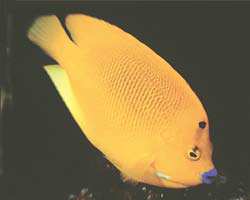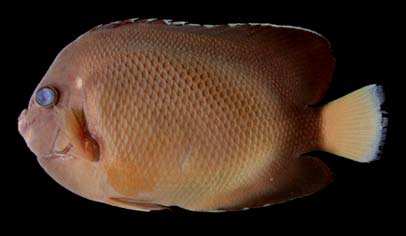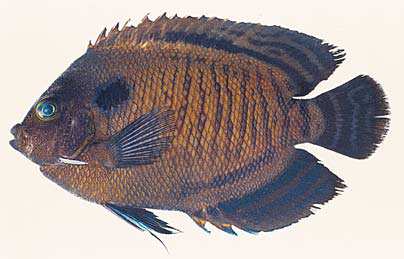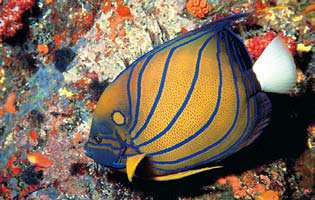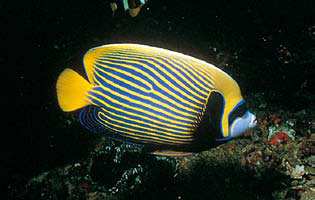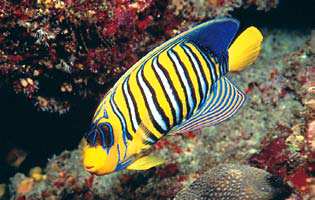POMACANTHIDAE
Angelfishes
By Ukkrit Satapoomin
|
Oblong to oval-shaped, deepbodied, highly compressed (size to about 50 cm). Mouth very small, terminal, protrusible gape not extending to anterior rim of orbit; snout short, not produced. One or more prominent spines at angle of preopercle. Teeth bristle-like, usually tricuspid, arranged in rows or band across jaws. A single dorsal fin, continuous, never notched, with IX-XV strong spines and 15-33 soft rays; anal fin with III spines and 14-25 soft rays; pectoral fins with 16-21 soft rays; pelvic fins with I stout spine and 5 soft rays; caudal fin rounded or slightly emarginated (except Genicanthus, which has a forked caudal fin with long filamentous extensions). Scales ctenoid, covering head, body, and median fins; largest in center of body; number of lateral-line scales variable, ranging from 30 to 90; no axillary scaly process at bases of pelvic fins. Color: very brightly colored with complex and varied color patterns; ground color white, gray, yellow, orange, red, blue, black or brown; often marked with bars, stripes, or spots of white, yellow, orange, blue, black or brown. Juveniles are often strikingly different in color from adults. Color patterns are most diagnostic for species identification. Similar families occurring in the area. Chaetodontidae: lack a strong spine at angle of preopercle; an axillary scaly process present at bases of pelvic fins; generally smaller than most angelfishes (except Centropyge). Ephippidae: lack a strong spine at angle of preopercle; generally less colorful as adults; dorsal and anal fins often very elongate. Scatophagidae: dorsal fin with a deep notch, lacking spines at angle of preopercle, and having IV anal-fin spines. Remarks. Generally found on coral reefs at depths of 5-40 m. A few species range to depths of 80 m or more. Most species closely associated with the substratum, feeding on sponges and other invertebrates; most species of Genicanthus usually found in midwater and feed on plankton. |

|
|
